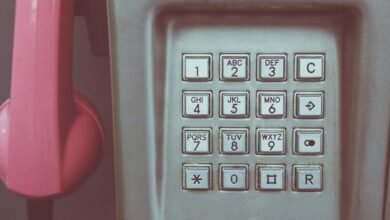Suspicious Caller Lookup 3299604008 3892809810 3444357413 3294016670 3511547350 3278687769

Recent analyses of phone numbers such as 3299604008, 3892809810, and others indicate a concerning trend in suspicious calling behavior. These numbers often display patterns typical of fraudulent activity, including repeated attempts to contact individuals and unsolicited requests for personal information. Understanding the mechanisms behind such calls is crucial for effective management. However, the implications of ignoring these warning signs can be significant. What measures can individuals take to safeguard their communications?
Understanding Suspicious Callers
Suspicious callers often represent a significant threat in contemporary communication landscapes.
Analyzing caller behavior patterns reveals distinct suspicious number trends, often characterized by repetitive dialing, unknown origins, and unsolicited requests. These patterns indicate potential malicious intent, making it vital for individuals to remain vigilant.
Understanding these trends empowers users to safeguard their communications and maintain their freedom from intrusive and potentially harmful interactions.
How Caller Lookup Services Work
Caller lookup services function by utilizing a combination of databases, algorithms, and user-generated reports to identify and evaluate incoming calls.
By employing reverse lookup techniques, these services cross-reference caller ID information against extensive records, enabling users to ascertain the identity of unknown callers.
This analytical approach empowers individuals to make informed decisions regarding their communications, enhancing personal freedom and security in an increasingly connected world.
Identifying Potential Scams
Identifying potential scams requires a systematic approach to analyzing incoming calls. Key scam indicators include unsolicited communication, pressure tactics, and requests for personal information.
Understanding caller motives—such as financial gain or identity theft—can further aid in detection. By discerning these patterns, individuals can critically evaluate the legitimacy of calls, enhancing their ability to protect themselves from fraudulent activities.
Tips for Protecting Yourself From Unwanted Calls
To effectively safeguard against unwanted calls, individuals must adopt a proactive approach that encompasses various strategies.
Key measures include utilizing call-blocking features available on most smartphones, thereby efficiently blocking unwanted calls.
Additionally, reporting spam numbers to appropriate authorities enhances collective efforts to combat this issue, contributing to a broader understanding of malicious activities and fostering an environment that promotes personal freedom from intrusive communication.
Conclusion
In an age where communication resembles a bustling marketplace, the presence of suspicious callers serves as a disruptive force, akin to pickpockets weaving through throngs of unsuspecting shoppers. Just as vigilant stall owners implement security measures to safeguard their wares, individuals must employ caller lookup services to identify and block these potential threats. By remaining informed and proactive, one can shield their personal space from unwanted intrusions, effectively maintaining control over their communications and peace of mind.




